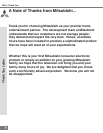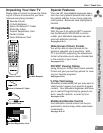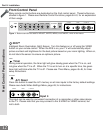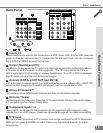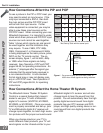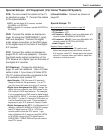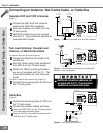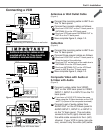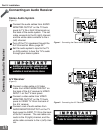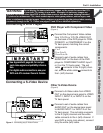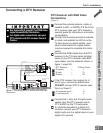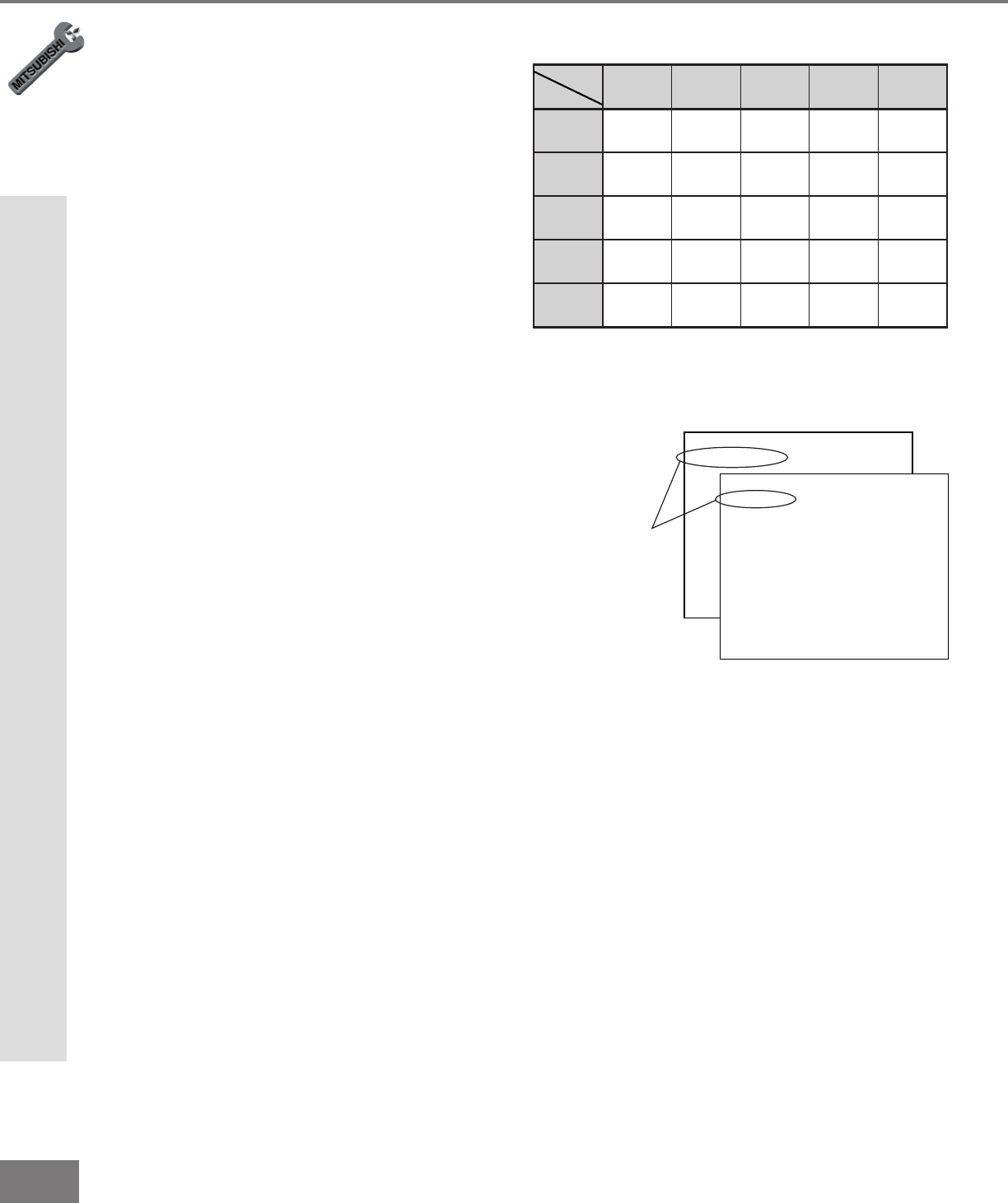
14
14
POP/PIP
NIAM
A-TNA B-TNA 4-1STUPNI
TNENOPMOC
2-1STUPNI
VTD
A-TNA
*KO POP/PIPON KO KO KO
B-TNA
KO *KO KO KO KO
4-1STUPNI
KO KO **KO KO KO
TNENOPMOC
2-1STUPNI
KO KO KO **KO
POPNO
PIPON
VTD
KO KO KO KO *KO
DTV
1080i Standard
4:09 AM
Tuesday
Signal Strength
Component-1
480p*Zoom
4:09 AM
Tuesday
or
Part II: Installation
How Connections Affect the PIP and POP
How Connections Affect the PIP and POP
To see a picture in the PIP or POP inset, you
may need to select an input source. If the
only input connected is ANT-A, then both
the main picture and the PIP/POP insert
will be from that input source. If other
video equipment is connected, you may be
able to view these input sources as the
PIP/POP insert. When connecting your new
Mitsubishi bigscreen, it is important to under-
stand which main picture and PIP/POP input
sources can and cannot be used together.
Table 1 shows which inputs can and cannot
be used together and the limitations they
may require. To see if 480i, DTV 480p,
1080i, Component-1 or Component-2 480p
is being displayed as the main picture, press
INFO on the TV remote control. The on-
screen display, gure 1, will list 480i, 480p
or 1080i when those signals are being
received. See Operation of PIP and POP,
pages 58-59, for operating instructions. An
asterisk (*) displayed after the signal type
indicates that the signal being received is
a non-standard format. A non-standard
format signal may or may not display prop-
erly in a PIP/POP inset. See Operation of
PIP and POP, pages 58-59, for operating
instructions.
How Connections Affect the Home Theater IR System
The Mitsubishi Home Theater IR System
Control is a special feature that makes it
easier to use your TV with a Mitsubishi
digital A/V receiver (M-VR700, M-VR800,
M-VR900, or M-VR1000). Once your equip-
ment is properly connected and set up, your
TV and Mitsubishi digital A/V receiver will
change inputs together, to match high resolu-
tion pictures with the proper surround sound.
When you change inputs on your TV to
watch different video products, your TV will
send signals via the infrared emitter to your
Mitsubishi digital A/V receiver and will also
change inputs to hear the sound from that
product. You will automatically hear the high
quality digital surround sound from digital
products like your DTV receiver and DVD
player, and high quality analog stereo or sur-
round sound from non-digital products like
your VCR.
Table 1. *No Side-by-Side with the same channel.
**No Side-by-Side with the same input.
Figure 1. On-screen display will show 480i, 480p, or
1080i when those signals are being received.





